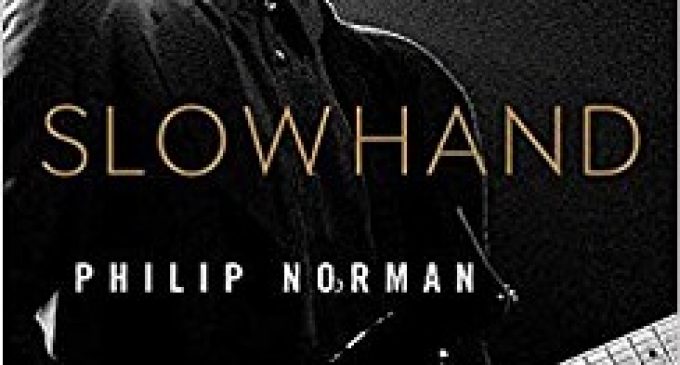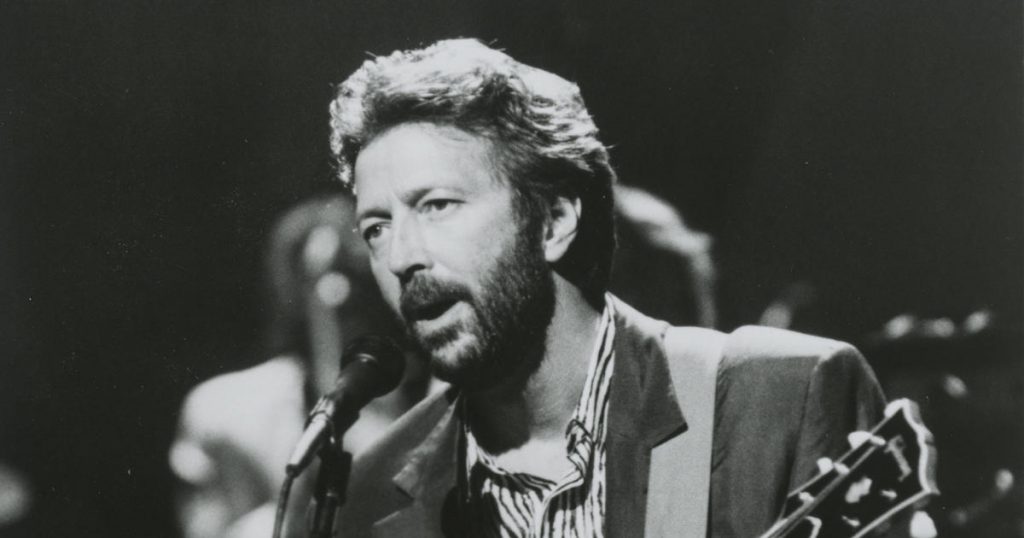Slowhand: The Life and Music of Eric Clapton

Slowhand: The Life and Music of Eric Clapton
By Philip Norman
448 pp.
$30
Little, Brown & Co.Among music book scribes, Philip Norman stands near the top in terms of influence and skill. His 1981 Beatles tome Shout! set the stage for the modern rock bio (as well as dirty up a bit the clean image of the Mop Tops with tales of their pre-fame days). And he has penned similarly door stop-size tree killers on John and Paul individually, Mick, and Elton (no last names needed).
Now, he turns his attention to classic rock’s most revered guitarist and often reluctant front man, Eric Clapton. Authors Ray Coleman, Harry Shapiro, Michael Schumacher and even Clapton himself have told the story. And though it does cover some familiar material, it’s Norman’s stab that will likely do down as the definitive work of the man who was the subject of the famous graffiti that appeared in London during his Yardbirds days, “Clapton is God.”
Raised in a situation in which he was told his grandmother was his mother, then only to be rejected by the real thing when she reappeared with a new family in tow, the quiet, coddled boy became obsessed with music, and in particular the blues – having first heard the song “Whoopin’ the Blues” by Sonny Terry and Brownie McGhee on a BBC radio show.
He became proficient – very proficient – first showcasing his work with the Yardbirds. And in the first of what would be many quixotic comings and goings in bands, left when they became “too” commercially successful and not in his view sufficiently pure to the music. Similar whims would have him popping in and out of John Mayall’s Bluesbreakers, Cream, Blind Faith, and Derek and the Dominos before establishing his solo career.
Norman details the soap opera-worthy romantic entanglements of Clapton, his best friend George Harrison, and Harrison’s wife, Pattie Boyd – certainly rock’s greatest muse for inspiring not only the Beatles’ “Something,” but Clapton’s “Layla,” “Bell Bottom Blues,” and “Wonderful Tonight.”
Though in reality, it wasn’t much of a triangle. Harrison – whose attentions were mostly geared toward Krishna and cocaine – didn’t flinch when Clapton declared his love for his wife. By that time, the ex-Beatle had grown fairly cold and distant to the stunning blond, while flaunting his own many affairs in her face at the same time (including one with former band mate Ringo Starr’s wife, Maureen). Clapton was pursuing not only Pattie, but her own younger sister as kind of a bizarre substitute.
That Clapton and Harrison’s friendship would outlast either of their marriages to Boyd is telling (and she told her own story in her great memoir Wonderful Tonight). But in one strange incident that Norman tells, Harrison at least once decided to challenge Clapton.
Not to a duel with pistols, but with instruments. Clapton found himself summoned to Harrison’s mansion to be confronted by two electric guitars, two amps, and an audience consisting only of Boyd and actor John Hurt. And though Harrison gave Clapton the inferior instrument and kept plying his confused friend with brandy while he drank only tea, “God” emerged the winner of this sonic pissing match.
Not hedging his bets, Clapton also consulted New Orleans musician Dr. John for a little voodoo help, for which the burly piano player gave Clapton a straw box with written instructions for some sort of love ritual. Instead, he turned to heroin and shut himself off in his mansion with a resilient teenage girlfriend, Alice Ormsby-Gore, for three years. That was before he spent years as a hardcore alcoholic, which let to drunken concert appearances. While standard rock lore names Keith Richards as the Ultimate Survivor, it could also be argued that Clapton should have been dead 20 times by now.
However – as was the case in many instances in his life – as soon as Clapton achieved his goal or won his prize when Boyd finally left Harrison for him after years of approaching and occasional coupling, he almost immediately began to slowly distance himself. And even finally getting his prized Pattie didn’t deter his voracious appetite for other women. Throughout, Norman paints Clapton as often selfish and pretty much a shitheel and dog when it came to women – sober or not.
And while it does sound like Slowhand is more about the highs and lows of Clapton’s personal life and struggles than his music, Norman does get into that as well – though not nearly as much as a fan might want. Clapton eventually reclaimed his life, sobriety, career, and has made a new family for himself with a wife and young children. He continues to record, play sporadic shows, underwrote and sat for interviews in the surprisingly candid documentary on himself Life in 12 Bars, and even just released a Christmas album.
Norman’s narrative benefits greatly from original interviews with scores of people including the long-suffering Boyd, former manager Roger Forrester, childhood friend and relatives, and fellow musicians and former flames. All in all, Slowhand (Clapton’s nickname derived from the “slow clapping” of Yardbirds audiences to show their impatience with the glacial pace that he replaced frequently broken guitar strings onstage) is a comprehensive and deep dive into a singular pool of talent.
Source: Doug Clifford Drums Up Memories of CCR on Massive (Vinyl!) Box Set




There are no comments at the moment, do you want to add one?
Write a comment